परिचय
The 2008 Mumbai terror attacks were a series of coordinated shootings and bombings carried out by 10 Lashkar-e-Taiba operatives across multiple locations in Mumbai from the evening of 26 November to 29 November 2008, leaving 166 people dead and over 300 injured; one attacker, Ajmal Amir Kasab, was captured alive, tried, and executed in 2012 after conviction under Indian law for waging war, murder, and terrorism offenses. The assault targeted high-profile and crowded sites, including the Chhatrapati Shivaji Terminus (CST), Taj Mahal Palace Hotel, Oberoi-Trident Hotel, Leopold Cafe, Cama Hospital, Nariman (Chabad) House, and other locations, and involved hostage-taking, arson, and prolonged firefights with Indian security forces.
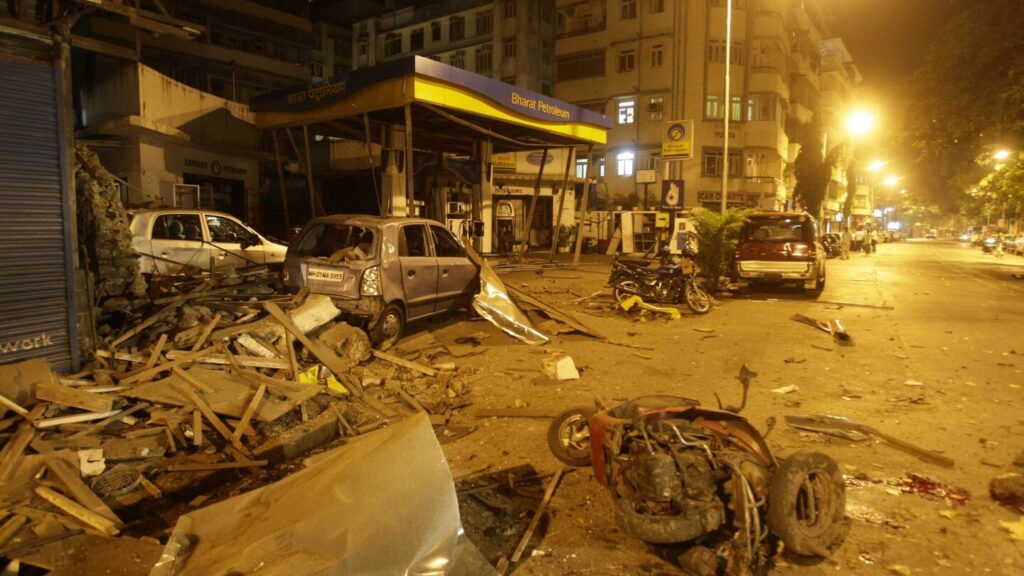
Timeline and Modus Operandi
- Infiltration and launch (26 November): The attackers traveled by sea from Karachi, hijacked the Indian fishing trawler Kuber, and landed near Mumbai’s Colaba using inflatable dinghies on the evening of 26 November, splitting into pairs to strike pre-selected targets.
- Multi-site attacks:
- CST and Cama Hospital: Automatic gunfire and grenades caused mass casualties at the railway terminus, with subsequent movement toward Cama Hospital where senior police officers, including ATS chief Hemant Karkare, were killed in an ambush.
- Taj Mahal Palace and Oberoi-Trident: Prolonged sieges with arson, IEDs, and hostages; commandos from NSG and Marine Commandos (MARCOS) conducted room-to-room clearance over nearly three days.
- Nariman (Chabad) House: A Jewish outreach center where attackers took hostages; NSG assault ended the siege but hostages were killed.
- Leopold Cafe and other sites: Rapid-fire attacks at popular public venues preceded the larger sieges.
- Resolution (29 November): Indian forces neutralized nine attackers by 29 November; coordinated operations ended the sieges at the Oberoi (28 November), Nariman House (28 November), and the Taj (29 November).
Perpetrators and Support
- Lashkar-e-Taiba (LeT): Indian and international investigations identified LeT as the orchestrating group, with handlers directing attackers via satellite/VoIP communications during the assault; the plot involved recon, GPS waypoints, and maritime transit.
- Ajmal Amir Kasab: Captured near Girgaum Chowpatty after a shootout that killed police officer Tukaram Omble; Kasab’s testimony and forensic evidence traced training and staging to Pakistan-based networks, corroborating intercepts and materials recovered from the attackers.
Casualties and Damage
- Fatalities: 166 victims, including Indian civilians, police, and foreign nationals from multiple countries; more than 300 injured across the attack sites.
- Iconic structures: The Taj suffered extensive fire and blast damage; Oberoi-Trident and Nariman House were heavily damaged; CST and public areas saw high civilian casualties due to crowded conditions.
Indian Security Response
- Immediate response: Mumbai Police engaged attackers on multiple fronts; specialized units (MARCOS) intervened at waterfront and hotel sites; NSG mobilized from Delhi, arriving overnight to undertake counter-siege operations.
- NSG operations: “Operation Black Tornado” encompassed systematic clearance at the Taj, Oberoi, and Nariman House using vertical insertion, controlled demolitions, and hostage evacuation; commandos neutralized entrenched attackers under complex urban combat conditions.
Investigations, Trials, and Diplomatic Fallout
- Domestic investigation and trial: Maharashtra Police and NIA compiled a detailed case leveraging Kasab’s confession, CCTV, call intercepts, GPS data, and forensic trails; Kasab was convicted in 2010 and executed on 21 November 2012 after the Supreme Court upheld his death sentence and mercy petitions were denied.
- International cooperation: Evidence sharing with multiple countries supported probes into the transnational logistics and financing; the attacks strained India–Pakistan relations and led to intensified global scrutiny of Pakistan-based militant networks.
Tactics and Capabilities Displayed
- Maritime infiltration: Use of a hijacked trawler (Kuber), GPS navigation, and inflatable boats demonstrated a sea-borne approach to urban terrorism in India’s financial capital.
- Live remote control: Handlers provided real-time guidance, target updates, and propaganda direction via voice-over-IP, highlighting a hybrid operational model combining commando-style tactics with remote oversight.
- Mixed weaponry: AK-series rifles, grenades, IEDs, and incendiaries enabled prolonged siege dynamics within large urban structures, maximizing media impact and casualty potential.
Lessons and Reforms
- Coastal security: The attacks prompted significant strengthening of India’s coastal surveillance, including coastal radar chains, faster MARCOS deployment protocols, and enhanced coordination among Navy, Coast Guard, and marine police.
- Urban counterterror readiness: Expansion and modernization of quick-reaction teams, NSG hubs in multiple metros, improved inter-agency communication, and upgrades to equipment and training followed the attacks.
- Emergency response and resilience: Hospitals, fire services, and civic agencies reviewed mass-casualty protocols; public and private sector facilities improved security infrastructure and evacuation planning.
Key Dates and Facts
- 26 November 2008: Attacks commence around 21:30 IST and continue into multi-day sieges at Taj, Oberoi, and Nariman House.
- 28–29 November 2008: NSG and other forces end the sieges; final clearance at Taj concludes on 29 November; nine attackers killed, one captured alive.
- Casualties: 166 dead, 300+ injured; victims include Indians and foreign nationals; senior Mumbai police officers killed in line of duty.
- 2010–2012: Kasab convicted and sentenced to death; Supreme Court upholds; execution on 21 November 2012 at Yerwada Jail, Pune.
Notable Individuals and Sites
- Attack sites: Taj Mahal Palace Hotel; Oberoi-Trident; CST; Leopold Cafe; Cama Hospital; Nariman (Chabad) House; Cafe Mondegar and other locations.
- Fallen officers: ATS Chief Hemant Karkare; Additional CP Ashok Kamte; Senior Inspector Vijay Salaskar; ASI Tukaram Omble (posthumously awarded Ashoka Chakra).
- Political and security leadership: Maharashtra and central authorities oversaw crisis response; NSG leadership commanded “Black Tornado” operations on ground.
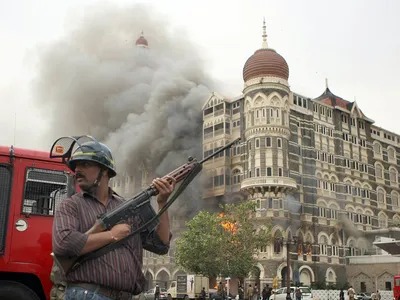
निष्कर्ष
The 2008 Mumbai terror attacks were a watershed in India’s counterterrorism history: a multi-target, multi-day urban siege executed via maritime infiltration, real-time handler control, and high-lethality small arms tactics—resulting in mass casualties, iconic infrastructural damage, and a captured attacker whose prosecution underpinned a transnational investigation. The attacks catalyzed sweeping reforms in coastal defense, urban CT capabilities, inter-agency coordination, and national resilience planning, even as they reshaped regional security dynamics and international counterterror cooperation.

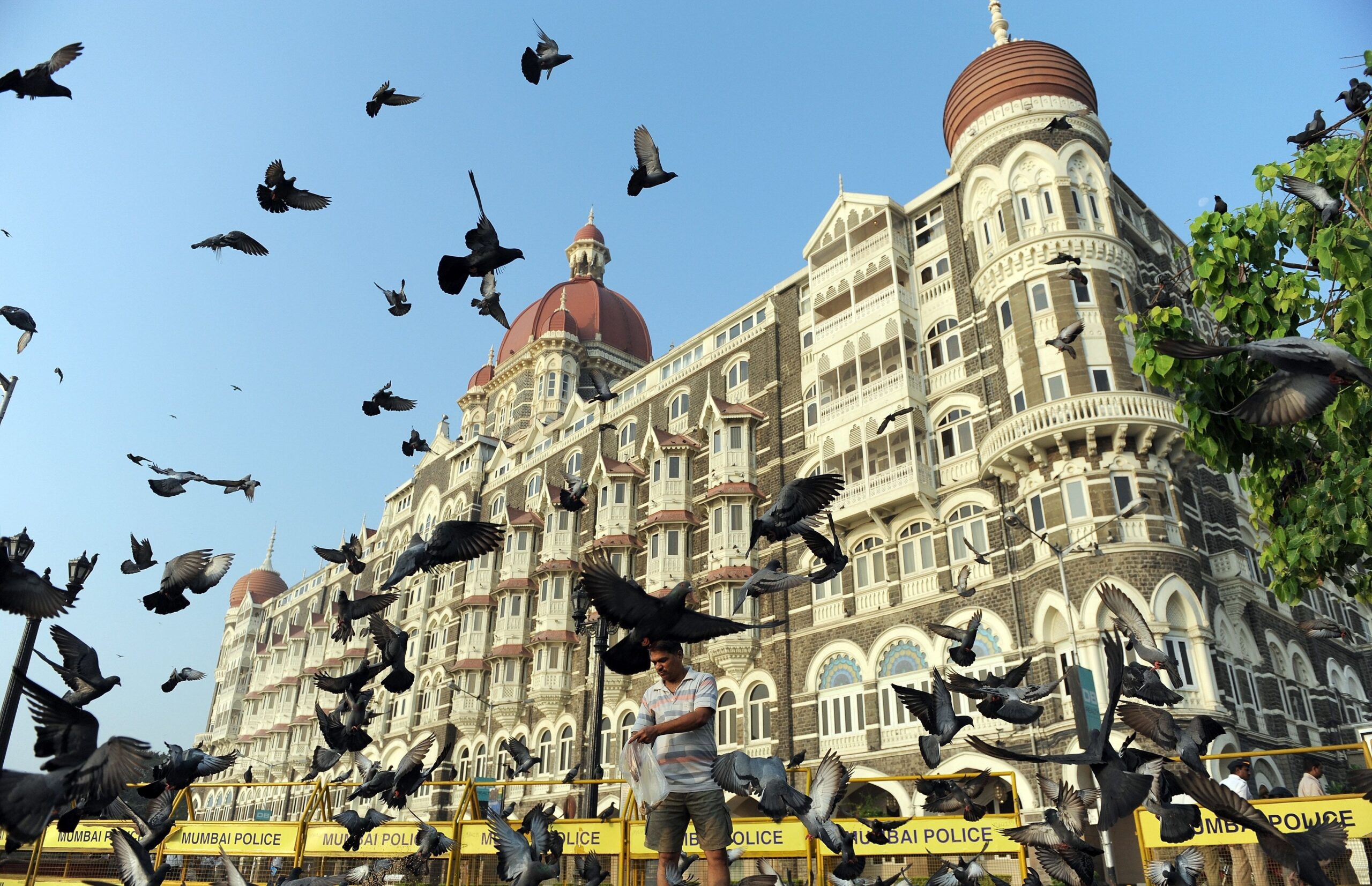



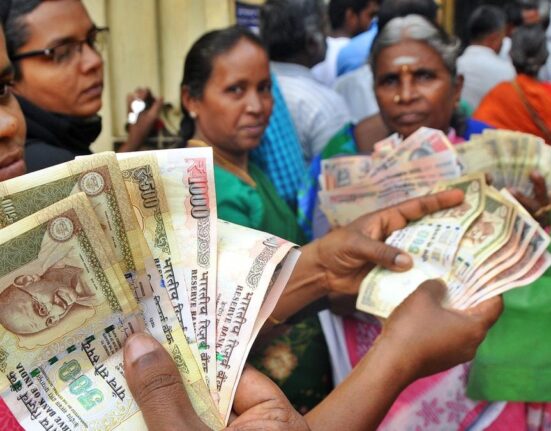
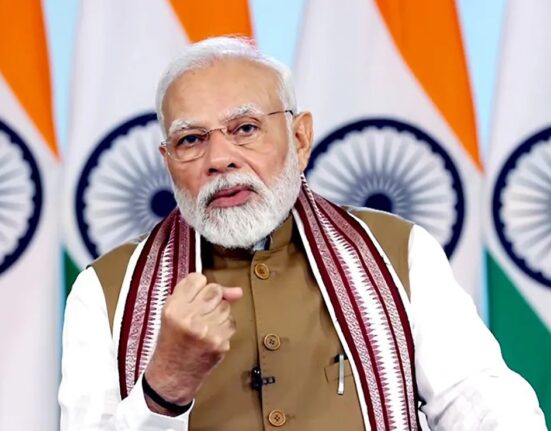
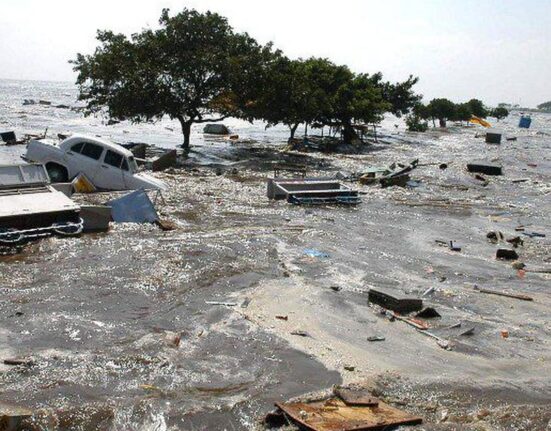
इस बारे में प्रतिक्रिया दें